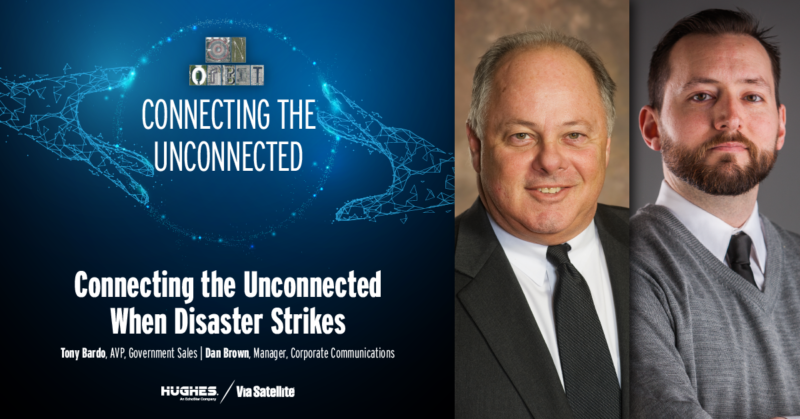Latest News

On Orbit
In the wake of natural disasters, functioning communications services and infrastructure can mean the difference between life and death. Flooding, seismic activity, wildfires, high winds, downed trees — even recovery construction projects — can disrupt power and damage fiber and cable wires. If the local network infrastructure is compromised, first responders have to bring a network with them to share what they’re seeing on the front lines with central command posts and to coordinate rescue and recovery efforts in the aftermath.
In the third episode of our special podcast series, “Connecting the Unconnected,” Hughes Network Systems’ Tony Bardo and Dan Brown join me for a discussion about the vital role that satellite technology plays in emergency services and disaster recovery, and the difference it has made in some of the most infamous disaster situations in recent years.
One of those instances is Hurricane Michael, which hit Florida in October 2018. During the storm, portable VSAT systems were deployed to help establish mission critical communications in high impact areas, allowing first responders to transfer data and coordinate rescue and recovery efforts. Tony and Dan explain how Hughes worked with federal emergency managers to provide connectivity to assist recovery efforts and help residents communicate with the outside world, and contact family members.
We also talk about the importance of creating resiliency in vulnerable communities and how it facilitates mission critical communications for first responders and emergency crews in disaster situations.
Listen Here:
Episode Links:
The FCC’s May 2019 report analyzing the impact of Hurricane Michael
Insurance Information Institute U.S. Catastrophe Statistics
A Hughes Disaster Preparedness White Paper that was released before the 2018 Hurricane Season
Hughes Disaster Relief Support
Get the latest Via Satellite news!
Subscribe Now